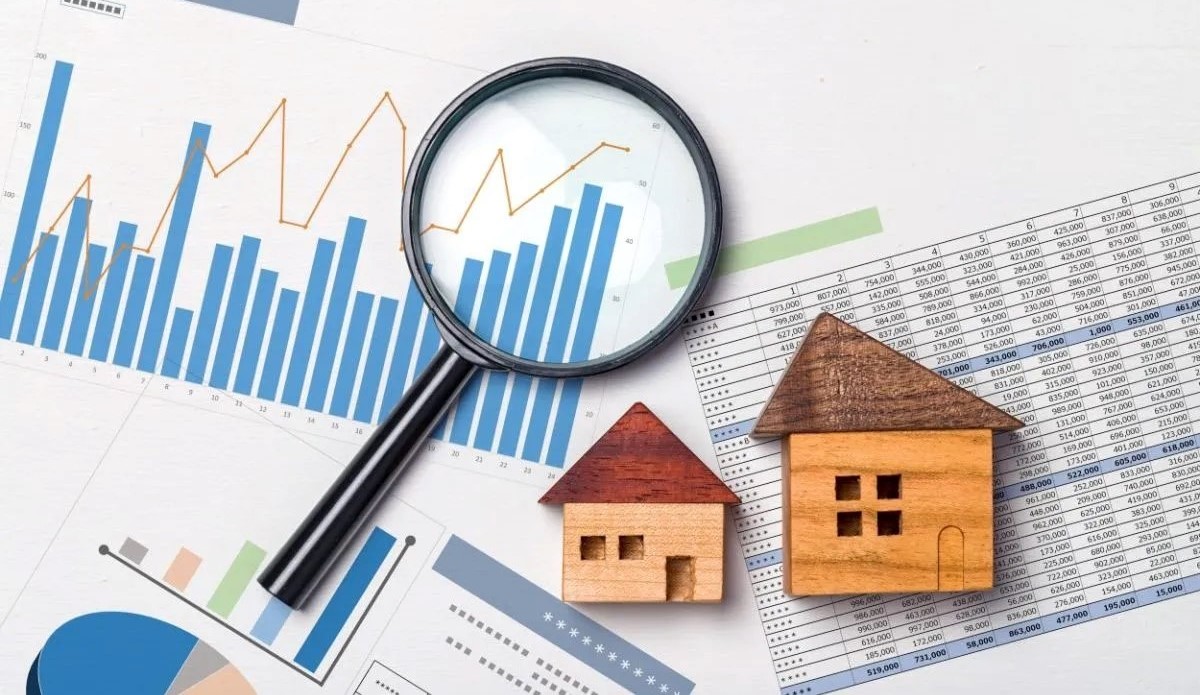You need a great real estate agent to sell your home. To find one, you want to go in knowing all the facts, like: how many homes does a Realtor® sell in a year? With many agents boasting “top producer” or “#1 agent” status in your city, it’s important to understand what’s typical for the industry and how your agent stacks up against their peers.
The truth is: the number of homes an individual agent sells in a year can vary widely. In the United States, there are more than 3 million active real estate licensees and 1.5 million Realtors®, or real estate licensees who’ve taken an extra step to become certified members of the National Association of Realtors (NAR).
Find a Top-Rated Realtor or Real Estate Agent Near You
It’s important to work with an agent you can trust. HomeLight analyzes over 27 million transactions and thousands of reviews to match you with the best candidates for free.
Some agents sell a single house per year for their friend, while others have built empires to facilitate a record 7,012 sales annually with sophisticated tech systems. But those are the extremes.
Here’s what industry metrics say is a typical number of sales per year for a Realtor, and why that figure is only one of many performance indicators you should be weighing in your search for the right agent.
Tallying a Realtor’s yearly sales
According to NAR, Realtors completed a median of 10 residential “transaction sides” in 2023. Keep in mind that transaction sides are not a strict measure of homes sold. An agent earns a transaction side when they help either a buyer or a seller close a sale.
That means for every transaction in real estate, there are two sides: one claimed by the agent representing the seller, and one claimed by the agent representing the buyer. If the Realtor represents both buyer and seller, then they would earn two sides.
NAR doesn’t isolate what percentage of “sides” in their calculation represents a Realtor’s median number of homes sold versus homes bought. If we assume it’s about 50/50, for example’s sake, the average Realtor would sell an estimated six homes and help clients buy an estimated six homes per year. In reality, this breakdown varies among Realtors, some of whom may do more listings versus buy-side transactions than others.
Part-timers and hobbyists sell fewer homes
Compared to the high-flying agents on reality TV shows, it might surprise you to learn that Realtors worked a median 35 hours per week in 2023, according to the NAR, and made a median gross income of $55,800. However, these figures also account for Realtors who don’t pursue real estate as a full-time job.
If an agent sells fewer than four homes in a year, they’re likely a hobbyist or part-timer who helps friends and family members now and again. They may treat real estate as an after-work gig, side hustle, or post-retirement activity. Or they may be a full-time agent who is just getting started.
Top producers and teams do more business
There are also a lot of agents who sell more homes than the average — some even in the hundreds. If an agent is selling 50-plus or into the hundreds of homes per year range, you can expect that the agent has help in the form of assistants and transaction coordinators, or in some cases, a full-blown team structure.
“Many times, an agent will show you that they have 150 sales in a year, but they have four other people buying and selling under them,” says Ron Thieme, a Masthope, PA agent who’s been selling homes for over 37 years.
In a real estate team structure, it’s not uncommon for the manager, who oversees all transactions, to count each one towards their total transaction sides. So, the high sales number could be a reflection of a seasoned agent who now runs a team.
If a seller chooses to work with a team’s leader, it doesn’t necessarily mean they’ll work with that leader directly for the whole transaction. The leader will likely have a few agents on their team who help to handle much of the day-to-day work.
Some agents sell fewer homes at a higher price point
In measuring the success of an agent, the number of sales — or if you want to count buyer deals as well, then transaction sides — is only a part of the picture. Realtors get paid on commission. Listing agents and buyer’s agents each collect a 3% commission on average, and their respective brokers also take a portion of the commission.
But the more valuable the home, the more a real estate agent is going to make per sale. In Thieme’s second-homes market of Honesdale, Pennsylvania; known for its recreational opportunities to boat, hike, and raft; homes range anywhere from $100,000 or less to $2 million plus.
An agent who is geared toward the higher priced lakefront homes in his area will have fewer sales in many cases, he says. Whereas another agent is going to have to sell a lot of $100,000 houses to make an equivalent amount of money.
For that reason: “An agent might sell 20 homes and be very successful as opposed to somebody who sells 50-80 homes,” Thieme explains. “So I would say that the determining factor on how many actual sales somebody does is the price point. The larger, higher priced sales sometimes require a lot more work.”
Realtor boards award members for units sold and sales volume
To get an idea of how different areas of the country measure what an exceptional number of Realtor sales per year is, here’s how some Realtor associations measure “top producer” status:
Sacramento: Members of the Sacramento Association of Realtors “Masters Club” must earn $4.5 million in sales volume and have 8 closed ends, or have 20 total closed ends.
Chicago: The Chicago Association of Realtors starts their Sales Awards program with agents who’ve sold more than $10 million in sales volume and/or sold 23 units per year.
Note that “sales volume” is a measure of the total value of the properties an agent represents in a year. So, if you sell three $500,000 homes in a year, you’d have a sales volume of $1.5 million. HomeLight gives agents a “Top Producer” badge if they rank in the top 5% of agents based on total sales volume for their area.
-
Ron Thieme Real Estate Agent
Ron Thieme Real Estate Agent at ReMax Wayne
Currently accepting new clients
- Years of Experience 37
- Transactions 33
- Average Price Point $200k
- Single Family Homes 33
Sales per year is just the tip of the iceberg
An agent’s sales per year is just one indicator of their performance. You can’t necessarily tell, based on that number alone, whether an agent is qualified to list your home and if they’re the right fit for you. Consider these other measures of performance in your search:
Homes sold in your area
An agent who regularly sells homes just down the street from yours could have valuable insight into your specific market. They’ll also be advocates and experts for the neighborhood, highlighting perks like local coffee shops, walking trails, and convenient access to the grocery store to potential buyers.
When you go through HomeLight to meet your real estate agent, you’ll be able to see their number of transactions isolated by year. In addition, our transaction heat map drills down into the number of transactions at the neighborhood level. To get even more granular, you can do a search for your location using the “Transactions near you” feature.
Years of experience
Thieme advises sellers to consider, “How long has an agent been in business? That tells you whether someone has the wherewithal, the knowledge and the experience to withstand the ups and downs of the market. Someone who’s been in the business a long time has figured out how to survive and how to help sellers in markets that are very strong and also markets that are weak where it’s harder to sell.”
Reviews and ratings
When you search for an agent with HomeLight, you can quickly find client reviews on their recent transactions. This is where you’ll get firsthand accounts of what it’s like to work with a specific agent and what their strengths are.
Note that on the HomeLight platform, “reviews” and “recommendations” are split into two groupings. Reviews are those solicited directly from HomeLight clients, whereas recommendations are content that an agent brings in from external review sources, such as their personal website.
Average days on market
Days on market (DOM) tracks the time between when a house is listed and when it goes under contact with a buyer. If an agent’s average DOM is lower than the average for their area, it’s a good sign that they price homes correctly to attract quick offers and come out of the gate with a strong marketing plan for their listings.
According to NAR, the national average DOM for a home hovers around 26 days, but DOM trends vary from city to city. HomeLight tracks average DOM and how agents in your area stack up against their competition. Agents awarded with HomeLight’s “Sells Homes Fast” badge are among the top 5% of agents based on average days on market for seller transactions.
Types of properties sold
A listing agent who usually sells single-family homes might not be the best person to stage, market, and navigate the HOA rules of your townhome or condo — and vice versa. HomeLight makes it easy to see what types of properties an agent has historically sold and whether that aligns with the home you need to sell.
Area of expertise
If your home sale requires someone with a certain set of skills, you can review the “Specialties” section of an agent’s HomeLight profile where they can list areas of expertise, including luxury, investment, waterfront, or probate properties.
Average sale-to-list price ratio
The sale-to-list price ratio tells you what percent of the asking price a home actually sells for. If a house is listed at $250,000, and sells at $230,000, the sale-to-list ratio would be 92%. If a house sells over asking, the sale-to-list ratio will be over 100%. An agent’s average sale-to-list ratio indicates how accurate they are at pricing homes, and how much of a seller’s list price they’re likely able to deliver. The higher their average sale-to-list price ratio, the better their track record.
Sell your house faster and for more
Thinking about selling soon? We’d be happy to introduce you to a few top local real estate agents. Our service is 100% free, with no catch. Agents don’t pay us to be listed, so you get the best match.
Get the whole story before you hire an agent
When you’re looking for your perfect real estate agent, knowing how many homes they usually sell per year can be a helpful datapoint — but it doesn’t give you the entire picture. Ideally, an agent’s experience should also be tailored to your specific neighborhood, property type, and price point. That’s why we’ve built our agent-matching platform at HomeLight around surfacing those objective performance indicators. Whenever you’re ready, we’re here to help connect you with the best agent for your individual needs.
Header Image Source: (Monkey Business Images / Shutterstock)



















 English (US) ·
English (US) ·